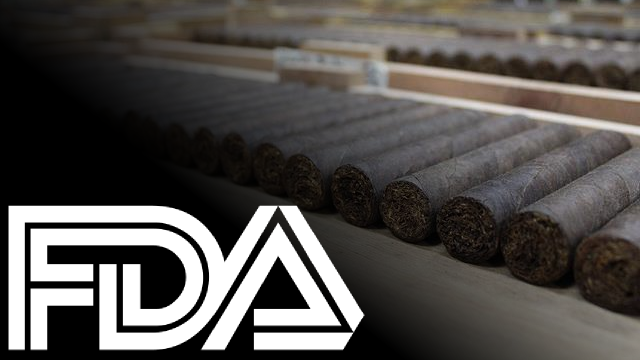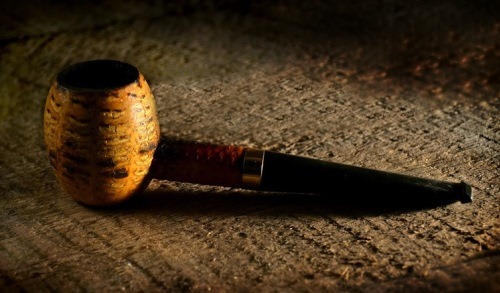Stogie Guys Friday Sampler No. 384
23 May 2014
As we have since July 2006, each Friday we’ll post a mixed bag of quick cigar news and other items of interest. Below is our latest Friday Sampler.
 1) In a post on the Nomad Cigar Company website, brand owner Fred Rewey lays out five concerns about the proposed FDA regulations for cigars. The entire piece is worth a read, but one part is particularly noteworthy: “The process would be cumbersome and costly. So costly that I suspect you will see as much as 30% of cigar brands disappear overnight. My concern is that some of the big guys will actually see this as a benefit—not weighing in the long-term cost of being regulated…I know that sounds cynical, but we have seen it happen…even in our industry.” It’s a legitimate concern, and even though we haven’t seen any cracks in cigar industry unity so far, there’s always a chance that in pursuit of short-term profits one or multiple companies may see FDA regulations as a way to limit competition. (In fact, the FDA law was originally passed with the backing of Phillip Morris, who saw it as a way to lock in the market share of its brands, including Marlboro.) It’s another reason why the FDA needs to hear not only from the cigar industry but also from consumers who want to protect their right as adults to enjoy handmade cigars. Make your voice heard here.
1) In a post on the Nomad Cigar Company website, brand owner Fred Rewey lays out five concerns about the proposed FDA regulations for cigars. The entire piece is worth a read, but one part is particularly noteworthy: “The process would be cumbersome and costly. So costly that I suspect you will see as much as 30% of cigar brands disappear overnight. My concern is that some of the big guys will actually see this as a benefit—not weighing in the long-term cost of being regulated…I know that sounds cynical, but we have seen it happen…even in our industry.” It’s a legitimate concern, and even though we haven’t seen any cracks in cigar industry unity so far, there’s always a chance that in pursuit of short-term profits one or multiple companies may see FDA regulations as a way to limit competition. (In fact, the FDA law was originally passed with the backing of Phillip Morris, who saw it as a way to lock in the market share of its brands, including Marlboro.) It’s another reason why the FDA needs to hear not only from the cigar industry but also from consumers who want to protect their right as adults to enjoy handmade cigars. Make your voice heard here.
2) In what must be a first, 262 Cigars released a song to go with their new cigar, Allegiance. The song was written and performed by 262’s Mike Justice along with guest rapper Brunson. The cigar is produced at the Tabacalera Carreras factory in Nicaragua with a Brazilian Mata Fina wrapper, Nicaraguan binder, and fillers from Nicaragua and Honduras.
3) Pinar del Rio is coming out with the Flores y Rodriguez 10 Anniversary Reserva Limitada in celebration of 10 years since Abe Flores and the Rodriguez Brothers came together to create the Pinar del Rio brand. The cigar is made with a Habano Ecuador wrapper, an Olor binder from the Dominican Republic, and the filler is comprised of seven-year-old Dominican Piloto Cubano leaf along with Nicaraguan tobaccos from Jalapa. The FyR 10th Anniversary Reserva Limitada will be released in three classic vitolas: Robusto, Grand Toro, and Wide Churchill with MSRPs of $9, $10, and $11, respectively.
4) Inside the Industry: Alec Bradley announced its new Family Blend Lineage featuring a Honduran wrapper, Nicaraguan binder, and Honduran and Nicaraguan fillers. Smoke Inn introduced the eighth blend in its Microblend Series, the 601 La Bomba Bunker Buster (5.5 x 56), a figurado variation of Espinosa Cigar’s 601 La Bomba.
5) Deal of the Week: Looking for nice bottle of booze? Caskers is an email newsletter that finds you quality spirits and gets them delivered to your door (in more states than anywhere else we’ve come across). Sign up here for access to their store and for the latest craft spirit offerings, including hard-to-find single malt and bourbon whiskey.
photo credit: Stogie Guys


 Before getting Leccia Tobacco off the ground, Leccia, formerly of
Before getting Leccia Tobacco off the ground, Leccia, formerly of 





 Patrick Ashby
Co-Founder & Editor in Chief
Patrick Ashby
Co-Founder & Editor in Chief Patrick Semmens
Co-Founder & Publisher
Patrick Semmens
Co-Founder & Publisher George Edmonson
Tampa Bureau Chief
George Edmonson
Tampa Bureau Chief